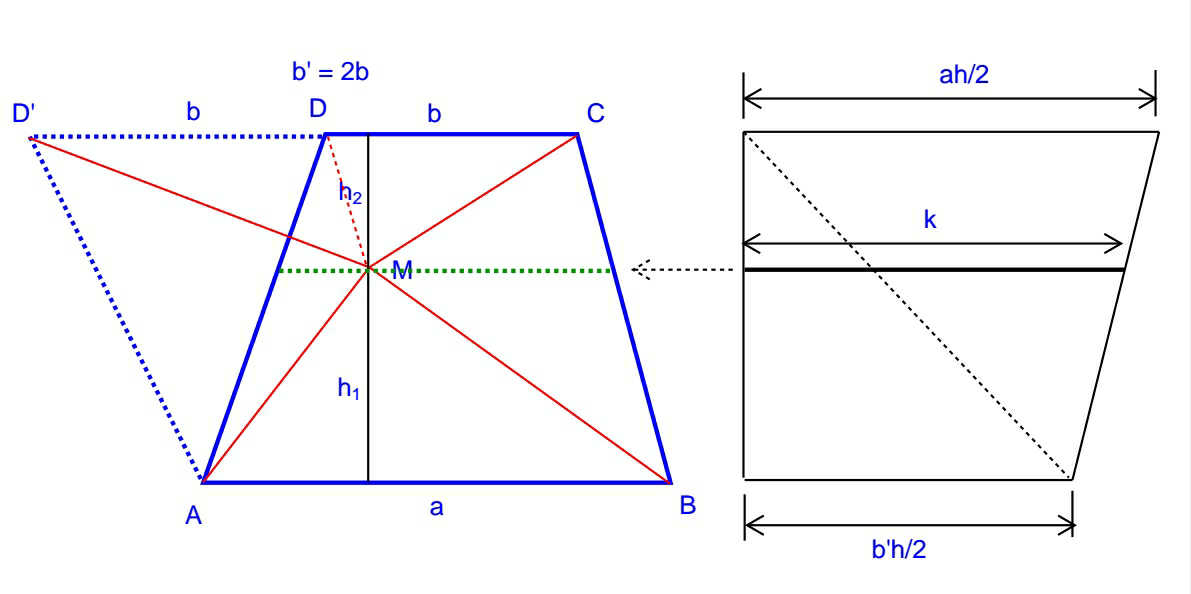Question Number 16066 by Tinkutara last updated on 21/Jun/17
![Let ABCD be a convex quadrilateral and let k > 0 be a real number. Find the locus of points M in its interior such that [MAB] + 2[MCD] = k.](https://www.tinkutara.com/question/Q16066.png)
Answered by mrW1 last updated on 28/Jun/17
![Let AB=a, CD=b ⇒[MAB]=(1/2)ah_1 ⇒[MCD]=(1/2)bh_2 with h_1 =distance from M to side AB h_2 =distance from M to side CD [MAB] + 2[MCD] = k=constant ⇒(1/2)(ah_1 +2bh_2 )=k ⇒(1/2)(ah_1 +b′h_2 )=k with b′=2b](https://www.tinkutara.com/question/Q16943.png)
Commented by mrW1 last updated on 28/Jun/17

Commented by mrW1 last updated on 29/Jun/17
![Case 1: AB//CD h_1 +h_2 =h=constant (1/2)(ah_1 +b′h_2 )=k ⇒(1/2)[ah_1 +b′(h−h_1 )]=k ⇒(a−b′)h_1 +b′h=2k if a=b′: ⇒ b′h=2k ⇒ k=((b′h)/2)=((ah)/2) i.e. k must be ((ah)/2), otherwise there is no solution. In this situation M can be everywhere in interior of ABCD. if a≠b′: (a−b′)h_1 +b′h=2k ⇒h_1 =((2k−b′h)/(a−b′))=((k/((b′h)/2))−1)×((1/((a/(b′))−1)))×h=constant ⇒the locus of M is a straight line parallel to AB and CD. But there is a solution only if the value of k is between ((ah)/2) and ((b′h)/2), see diagram above. When k=((ah)/2), M lies on side CD. When k=((b′h)/2), M lies on side AB.](https://www.tinkutara.com/question/Q16949.png)
Commented by mrW1 last updated on 29/Jun/17

Commented by Tinkutara last updated on 29/Jun/17

Commented by mrW1 last updated on 28/Jun/17

Commented by mrW1 last updated on 28/Jun/17

Answered by Tinkutara last updated on 29/Jun/17

Commented by Tinkutara last updated on 29/Jun/17

Commented by Tinkutara last updated on 29/Jun/17

Commented by mrW1 last updated on 30/Jun/17

Commented by Tinkutara last updated on 30/Jun/17

Commented by mrW1 last updated on 30/Jun/17

